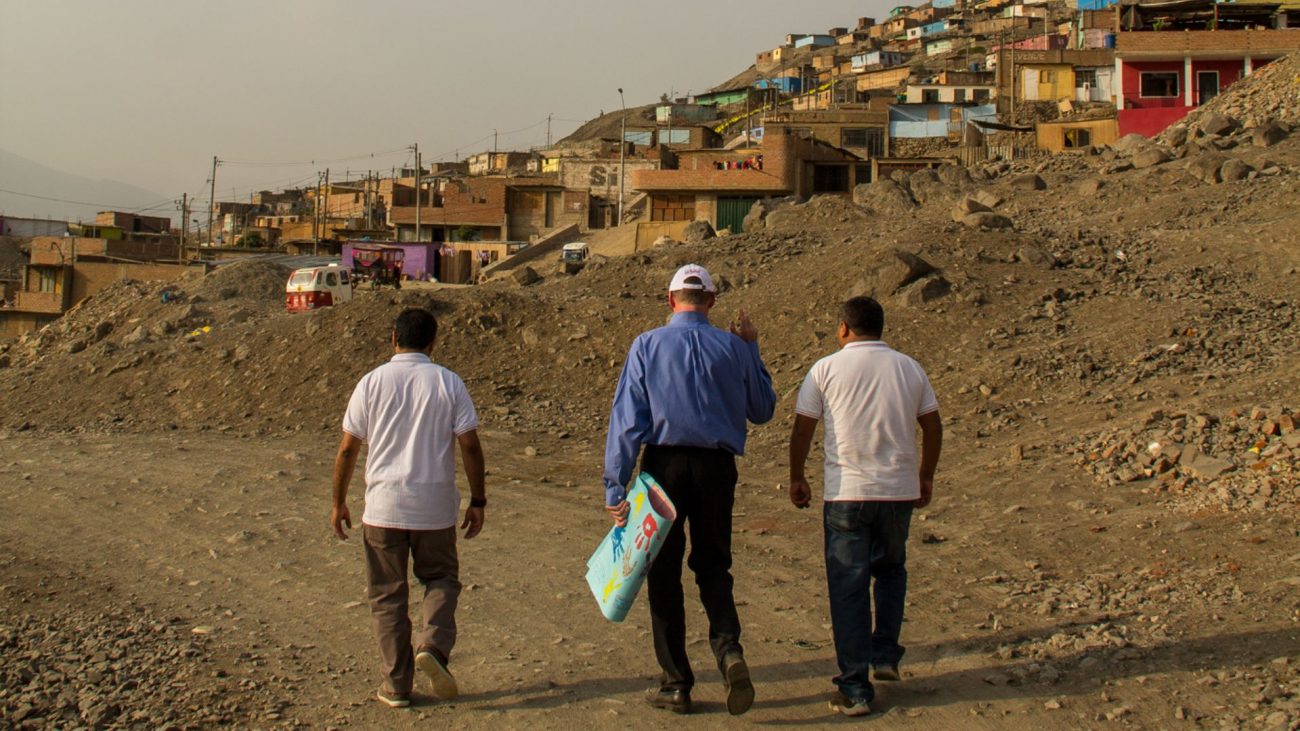Paul Farmer’s Paul Farmer interest in Peru was born through a friend of his, Father Jack Roussin, whom he had met in Boston during his years at Harvard University.
In the early 1990s, Father Jack, who like Paul exuded a fighting spirit against social injustices, had left the United States to move to Peru, where he established a parish in the Carabayllo district.
Every time the priest visited Boston, he always mentioned to his friends Paul, Jim and Ophelia that Partners In Health should start a project in that Lima district. Poverty overflowed Carabayllo and the quality of life was a bad dream.
The team agreed. The initial plan was to implement a small health improvement project based on a census, which they would apply to identify the main health problems in the community.
Initially they found problems similar to those in Haiti, such as tuberculosis (TB), but supposedly nothing serious. In addition, the WHO highlighted that Peru was one of the developing countries with the best TB control program in the world.
Apparently, there was not much to worry about. Paul even recalled telling Jim:“TB is the one thing we don’t have to worry about here [in Peru].”.
But the reality was to be very different and above all cruel.
Everything changed when in May 1995 Father Jack fell ill. He was taken to Boston, where he was diagnosed with tuberculosis and began conventional treatment for the disease. A month later, the priest died.
The blow was hard on the team, especially Paul. Not only was he shaken by the departure of his friend, but also by the confirmation of a more frightening reality: Father Jack had died of multidrug-resistant tuberculosis (MDR-TB).
This meant, almost certainly, that someone in Carabayllo had infected him and, therefore, that more people could be living with the disease.
Dr Jaime Bayona, Dr Jim Yong Kim, Dr Paul Farmer and Ophelia Dahl during a visit to Peru in 2009.
From that moment on, a long-running struggle would begin in Peru, led by Dr Paul Farmer, Dr Jim Yong Kim, and then-Partners In Health director Dr Jaime Bayona.
The root of the problem was that MDR-TB patients did not receive adequate treatment for their condition in Peruvian hospitals, and ultimately ended up developing resistance to four or even five TB drugs.
The Peruvian health system followed WHO guidelines and its DOTS (directly observed treatment) strategy, which were used to ensure that the TB patient receives and ingests all drugs, and to monitor his or her response to treatment.
But in the case of MDR-TB patients, following conventional treatment was almost a death sentence. They were never cured no matter how many pills they took, they spread the disease in their communities, and some time later they died.
Paul and Partners In Health not only set out to change the Peruvian health system, but also that of the WHO; one of their official positions at the time stated: “in developing countries, people with multidrug-resistant tuberculosis often end up dying, as it is usually impossible to access effective treatment in poor countries”.
It is no exaggeration to say that Paul and Kim became a sort of Robin Hood’s duo of medicine. Every time they visited Harvard Medical School’s Brigham and Women’s Hospital, they would fill their suitcases with drugs to treat MDR-TB, which they would then bring back with them to Peru, the bill for which was covered by Tom White, one of PIH’s early benefactors.
“Dr. Paul would arrive from the U.S. with suitcases full of medicine, you would think he would bring clothes in his luggage. It was a joy to see him arrive in Carabayllo, we would wait for him as if we were children when you wait to see your dad after arriving from a trip,” recalls Karin Llaro, a nurse at Socios En Salud, about those times.
The efforts would eventually pay off.
When Socios En Salud started the first MDR-TB treatment for 75 patients in Peru, it had a cure rate of 83% - the highest cure rate in the world at the time!

Dr. Paul Farmer (middle) during a visit to Carabayllo in 2013.
Paul and the SES team demonstrated to the world and the entire scientific community that treatment for MDR-TB could be delivered at the community level. But not only that.
Experts in TB control had declared that MDR-TB treatment was too expensive, but no one had tried to cut the main expense, which was the very expensive drugs.
The work of Partners In Health and the team’s advocacy efforts influenced WHO to agree to include second-line antibiotics in the list of essential TB drugs. Drugs to treat a case of four-drug resistant MDR-TB were now costing PIH about fifteen hundred dollars instead of fifteen thousand, and prices were still dropping rapidly and substantially.
We used to say that Paul was an adventurer whom life had prepared to be a nomad. And there was no fatigue to slow him down.
To come to Peru, Paul used to drive before dawn from PIH headquarters in Cange, Haiti, to the capital Port-au-Prince. If there was traffic, he would leave the car with one of his aides and race to the airport. There he would catch a flight to Miami and that same night he was landing in Lima, and then he would travel to Carabayllo.
That’s how tireless Paul’s love for Peru and its people was.
Hilda Valdivia, a member of the TB program team at Socios En Salud, remembers him as follows: “Dr. Paul was known as the people’s doctor, a symbol of the struggle for social justice, who despite his language limitations managed to communicate with patients and community leaders, motivated by his commitment and dedication to providing safe, quality care to all who needed it.
As in the world, Paul’s legacy lives on and will forever live on in Peru in every action the Socios En Salud family takes to demonstrate that injustice has a cure.
